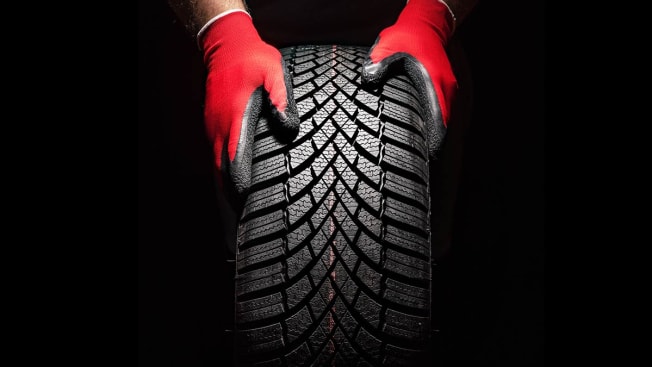The Driving Forces Behind Tire Purchases Revealed
Consumers share motivations, satisfaction, and insights into the tire buying process in our exclusive survey

Tires may all look the same, but just as there can be dramatic differences in their performance, there can be variations in the tire-buying experience. A recent survey conducted by Consumer Reports on the tire-buying experience shows that CR members tend to be an informed group who place a priority on handling, wet grip, treadwear, and ride comfort. And the survey showed that they experienced a range of satisfaction when it comes to tire retailers, particularly when looking at the various elements of the buying process.
What Drives Tire Purchases
The most common reason for buying replacement tires is simply normal tire wear, accounting for 55 percent of purchases, followed by premature/irregular tire wear at 17 percent. Every other potential reason trailed, with just single-digit percentages for others responses. A flat tire led to 8 percent of purchases.
When it came time to buy, 84 percent bought all-season tires.
Among the myriad tire attributes consumers must consider when tire shopping, CR members prioritized handling, wet grip, treadwear, and ride comfort above other factors. Appearance and sustainable materials were the least important.
"There can be a real difference between perception and reality when buying tires, especially with the influence of marketing," says Ryan Pszczolkowski, head of CR’s tire test program. He says that when it comes to assessing value, it’s important to do your homework. "When looking to get the most for your money, check the CR tire ratings for both performance and estimated tread life in narrowing down your choices," he adds.
Importance of Tire Factors for Next Purchase
| Factor | Very Important % |
| Handling | 76 |
| Wet grip | 74 |
| Treadwear | 67 |
| Ride comfort | 58 |
| Noise | 50 |
| Winter grip | 50 |
| Fuel efficiency/range | 41 |
| Price | 40 |
| Brand | 23 |
| Sustainable materials | 14 |
| Appearance | 13 |
Which Tires They Buy
"Brand loyalty" is not a significant factor among CR members when it comes time to buy replacement tires. In fact, just 23 percent said brand was a very important consideration.
"It is possible to upgrade performance by choosing a different model than came on the car from the factory," Pszczolkowski says. "But without doing your research, it is also possible that the replacement may not hold the road as well." Pszczolkowski adds that it’s a safe decision to stick with the original equipment tires because they were optimized for that particular car, though different replacement tires can sometimes offer longer tread life and better all-weather grip.
The cost for the replacement tires depends heavily on what type of vehicle they’re for. Members paid an estimated price of $194 per tire, up significantly from our 2020 survey, when the median price was $167. The cost for installation rose slightly, from $25 to $27, in our latest survey.
At $36, car dealerships charged the most, and at $16, Walmart charged the least for installation.
Where They Buy Tires
Tire shoppers have many choices for where they buy their tires; this surveyed group cited 18 retail chains, spread among major tire retailer chains such as Discount Tire, wholesale clubs such as Costco, online retailers like Tire Rack, and general automotive stores such as Pep Boys. Independent tire shops and car dealerships were rated as two separate groups.
About a fifth of surveyed CR members (22 percent) said they bought or installed their tires from independently owned tire stores, including local mechanics and service stations; 13 percent purchased and/or had their tires installed at car dealerships. Among the retail chains, Costco took the top spot, capturing 15 percent of tire purchases and/or installations, followed by Discount Tire Centers at 13 percent. No other retailer had a market share of 10 percent or more.
Satisfaction With Tire Buying
as sales staff, installation quality, waiting area, checkout ease, and costs. Independent retailers, Les Schwab Tire Centers, Kal Tire, Discount Tire, Tire Rack, and America’s Tire topped our ratings with overall satisfaction scores that placed them in our top (i.e., dark green) ratings tier.
While no retailer earned our top mark on all the factors in the survey, most of them were rated favorably for overall satisfaction. Collectively, however, the least-satisfying retailers were often dinged for selection and sales staff.
It’s important to note that people who buy their tires from one of the online-only tire retailers in our survey (Tire Rack) appeared to be able to find a good installer. Overall, a significant 15 percent of CR members ordered their tires online and had them shipped to a local store.
From the survey, we have ranked the retailers based on overall satisfaction, with insights on many factors as sales staff, installation quality, waiting area, checkout ease, and costs.
See the complete tire retailer ratings.
Time to Shop
Start researching replacement tires before you need them, when the tread depth is at 4/32 of an inch. (Think quarter, rather than penny. See the video below.) Have the new set installed before they are worn to 2/32 of an inch, the legal minimum. At that point, traction is significantly compromised, particularly with the ability to resist hydroplaning.
Use our extensive tire ratings based on testing hundreds of tires per year and extensive treadwear evaluations.
Once you’ve selected the replacement tires you want, there are many retailers to choose from. The best ones often have compelling tire prices and high installation quality—although all the retailers in the survey did a decent job of satisfying consumers overall. Our retailer ratings can steer you toward the best national stores.
Watch for rebates from the tire makers. These are shown on the websites for tire companies and tire retailers.
Try negotiating the price from your local store. They may price match if you find a lower price elsewhere. The majority of survey respondents (87 percent) did not negotiate, but among those who did, 64 percent were successful at getting a better deal. The average savings for these savvy shoppers was $100 for a full set.
Factor free perks. Most members (80 percent) who purchased or installed tires at a retailer received at least one free perk or service. Among all members who received one or more such perks, about half got free tire balancing (51 percent) or free tire rotation (49 percent). Almost as many got free tire mounting (46 percent), while more than a third got free disposal of the old tires (35 percent). In particular, free rotation can bring significant savings, if you return to the store regularly to take advantage of this service. Common recommendation is to have this performed every 5,000 to 7,500 miles.
















